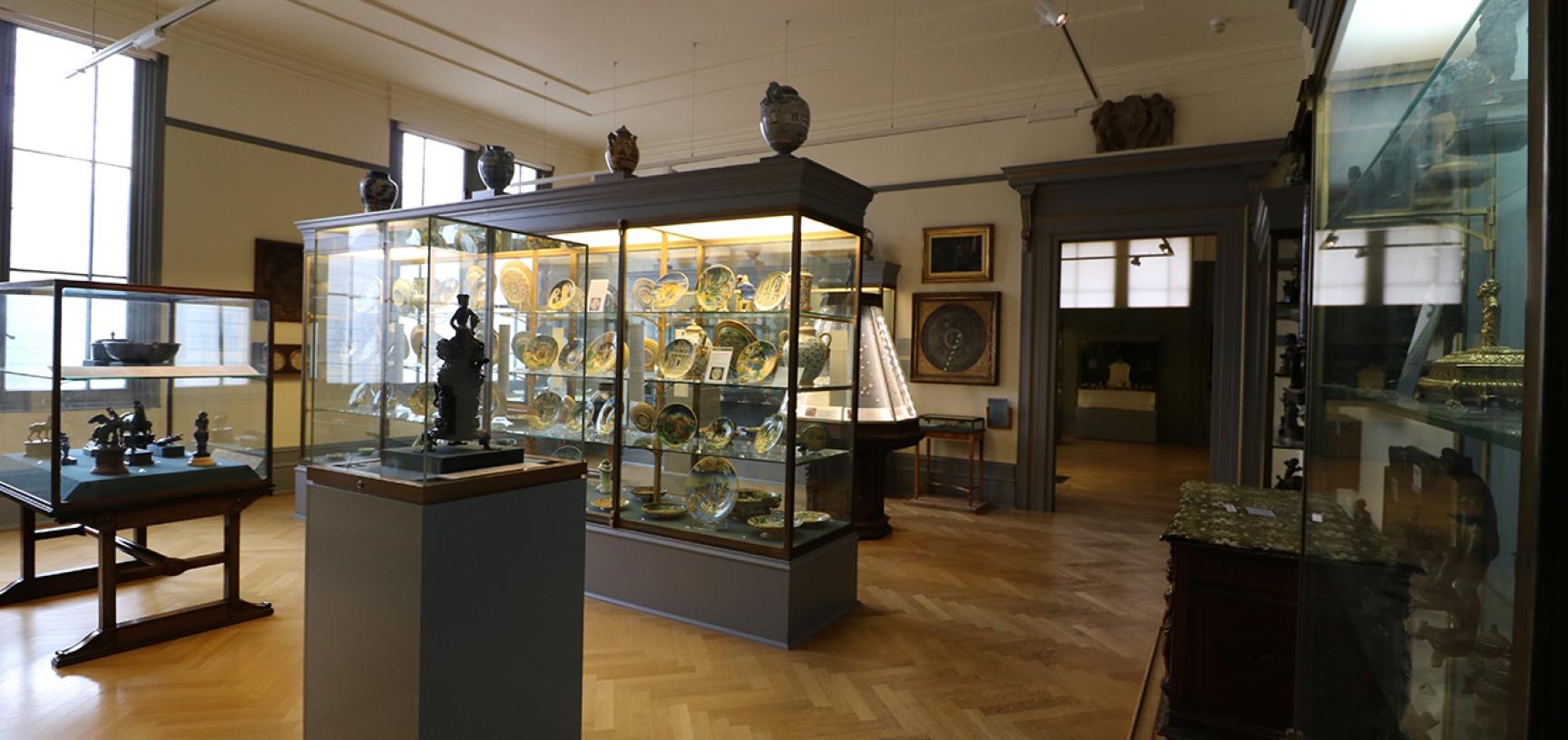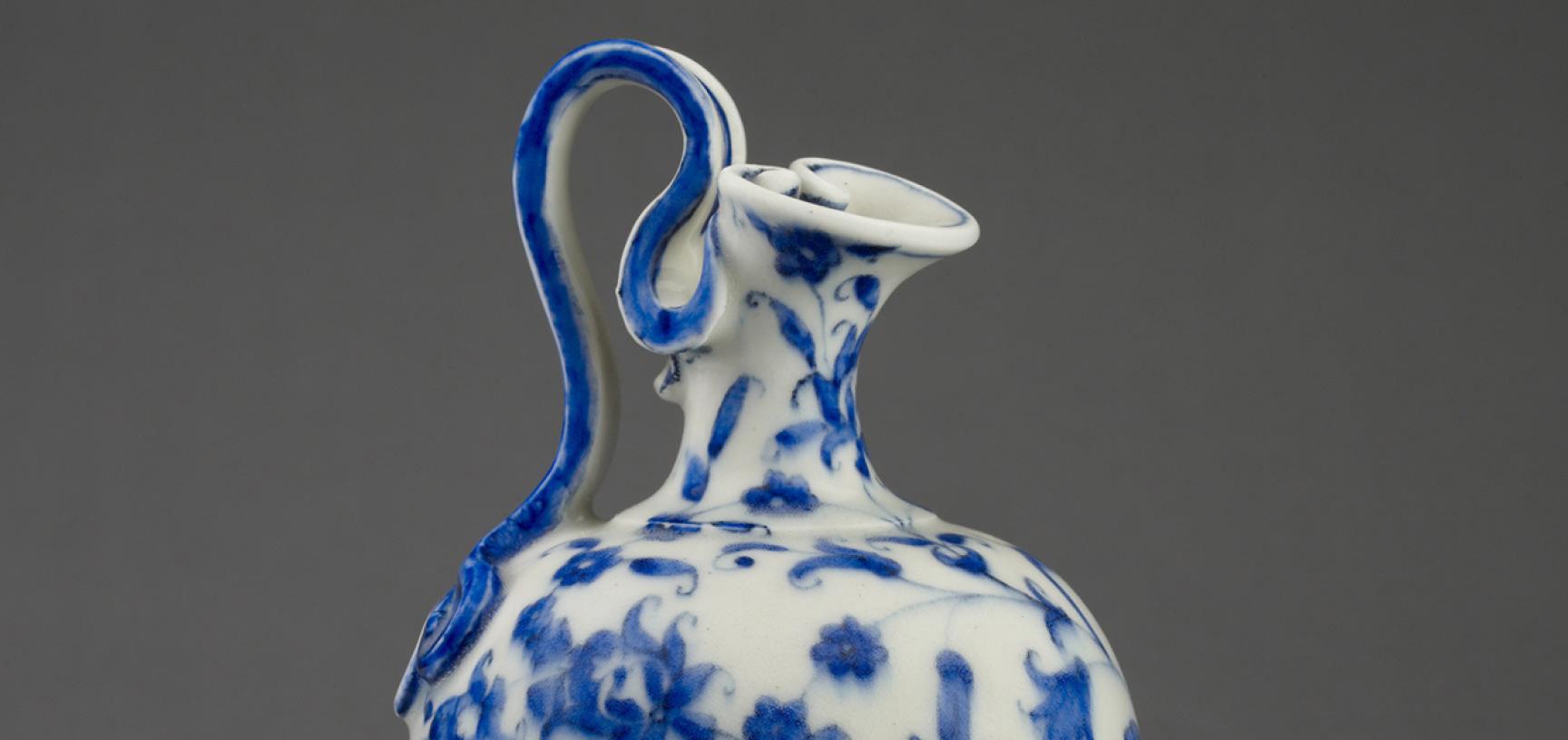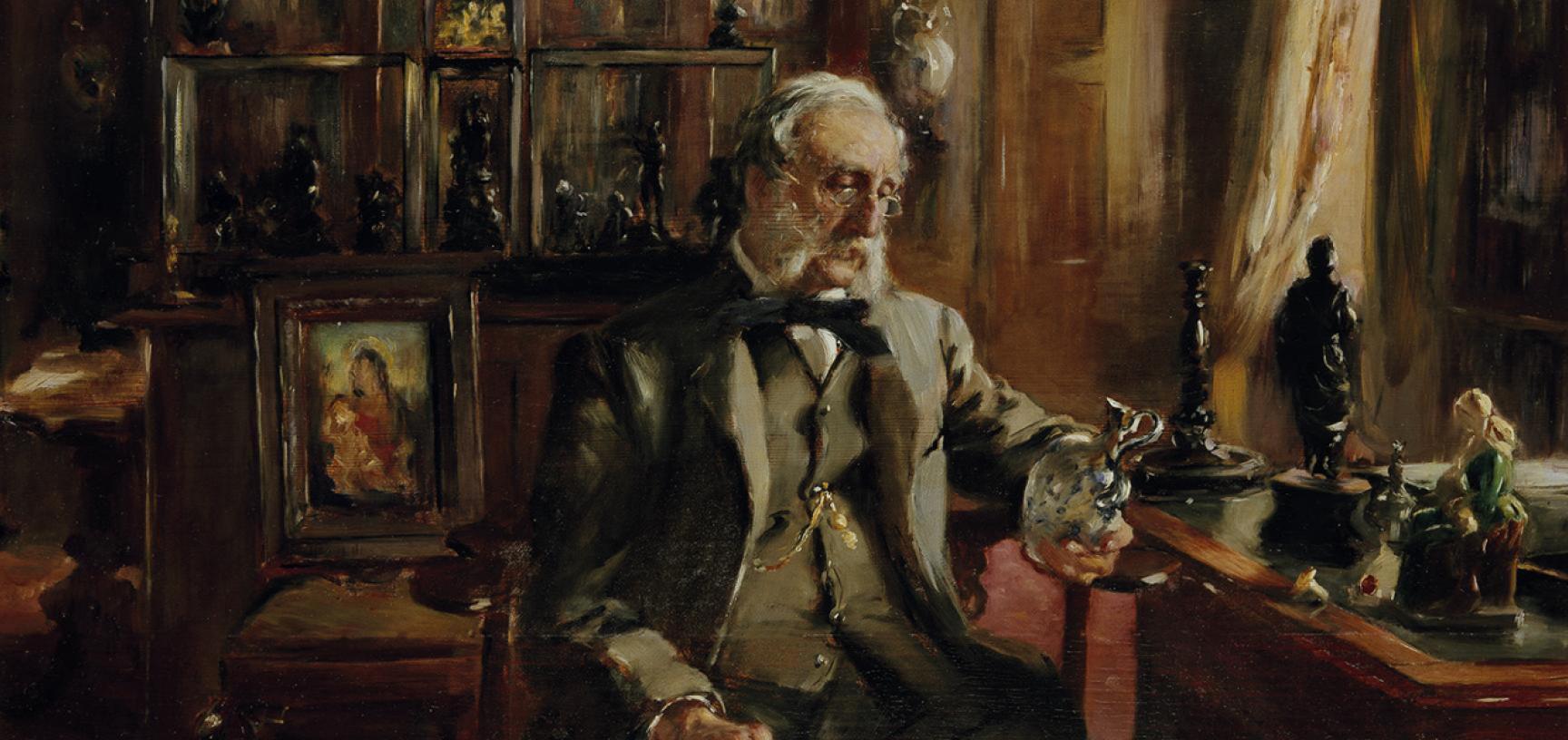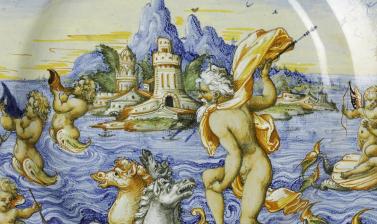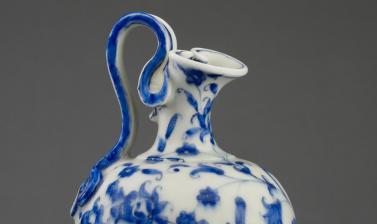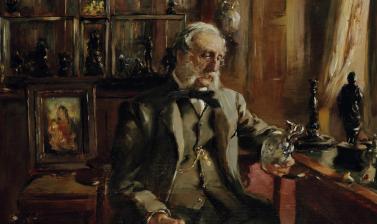ARTS OF THE RENAISSANCE
Most of the items displayed here are from the collection of the Victorian scholar-collector C.D.E. Fortnum (1820–99) the ‘second founder’ of the Museum. Fortnum not only bequeathed his collection but also paid for the extension which allowed the old Ashmolean Museum and the University Galleries to unite to form the Ashmolean Museum of Art and Archaeology.
Fortnum’s bequests still form the basis of the Ashmolean’s collections of sculpture and decorative arts of the Renaissance, an era which saw an increasing desire among the richer classes for tasteful possessions in their houses and a growing interest in classical subject matter.
The extensive maiolica collection depicts much classical subject matter. It also includes the unusual plate by Francesco Urbini decorated with a composite head made up of penises. Bronze sculptures by the renowned Renaissance artists Riccio and Giambologna are also on display. As you explore the gallery you will see a small blue and white china flask displayed in its own case. This ewer was bought by Fortnum in Naples in 1879 and is a rare example of the Italian ceramicists’ ground-breaking project to imitate Chinese porcelain in the 16th century. A painting of Fortnum hanging on the adjacent wall shows him studying the same flask.
Before you leave the room take a look at the freestanding case displaying a selection of the Ashmolean’s extensive finger and posy ring collection.
Rings Temporarily Off Display
The rings usually on display in the Arts of the Renaissance Gallery (Gallery 56) have been temporarily removed while their case is refurbished.
The work will be completed soon. We apologise for any inconvenience and disappointment.




